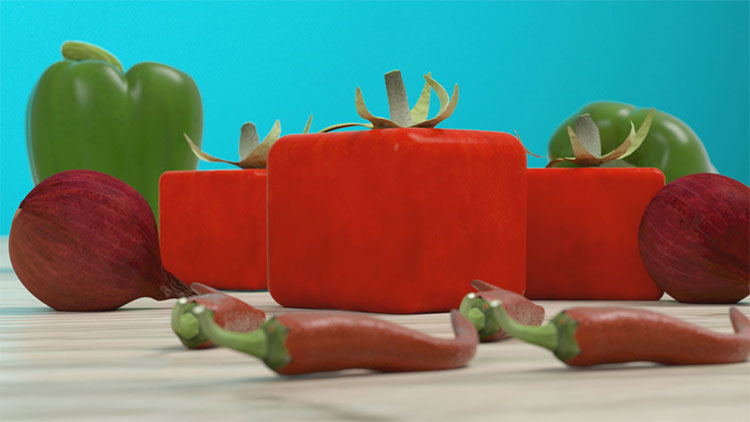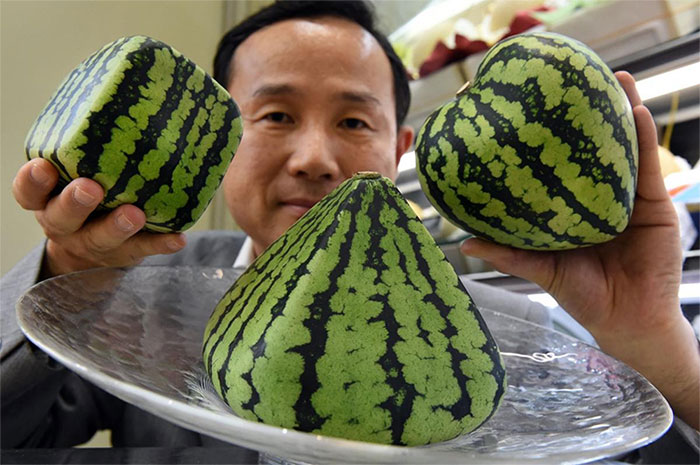Fruits and vegetables are a gift from nature, showcasing a rich variety of shapes, from round like tomatoes, elongated like cucumbers and carrots, to curved like bananas and squashes. However, we never see any fruits or vegetables that are square in shape. Why is that?
Walking along the aisles of a vegetable shop, you will encounter countless shapes of tomatoes, some as big as a fist and others as small as a marble. Other vegetables like squash, potatoes, cucumbers, and greens exhibit similar diversity. This variety in color, shape, and size is not a result of natural selection but rather the handiwork of humans.
Over thousands of years, farmers and breeding researchers have discovered beneficial mutations in fruits and vegetables—such as great taste, high yield, and unique shapes—and have maintained these traits through traditional breeding techniques. This process, although slow, can ultimately lead to the creation of new, marketable fruits with distinctive characteristics.

OVATE is what differentiates round cherry tomatoes from pear-shaped tomatoes.
Advancements in genetic mapping will help accelerate the traditional breeding process, which has always been slow and steady. With the gene maps of tomatoes or cucumbers in hand, breeders no longer have to wait months to see what the fruit looks like. Instead, they can search for identifying markers in the plant’s DNA that dictate shape, size, and color. The method of “Marker Assisted Selection” promises to shorten the years involved in traditional crop breeding.
Esther van der Knaap, a leading figure in genetics, has conducted research on how plant DNA precisely influences its growth direction, for instance, long and slender like cucumbers or round and meaty like beefsteak tomatoes. In a paper published on November 9, 2018, in the journal Nature Communications, van der Knaap announced the discovery of two gene families that play a crucial role in the formation of round or elongated fruits and vegetables. Fruits and vegetables are the edible organs of plants, and these organs grow and develop through cell division.
“To create a specific shape, such as long or round, you will need certain types of meristematic tissue. They will either divide horizontally or vertically,” van der Knaap explains. This means that cells of an organ that divide horizontally will separate in the middle; the more they divide horizontally, the rounder and plumper the fruit will appear.
This indicates that the more cells of an organ divide in various directions by separating in the middle, the closer they will come to a round shape. However, in some fruits, vertical cell division will help achieve better yields, such as in bananas and cucumbers.
The “optimal” shape mentioned has developed over millennia, as farmers and plant breeders have sought, discovered, and tested useful mutations in fruits and vegetables, making them tastier and more productive.
What van der Knaap and her colleagues discovered in the tomato genome is a gene called OVATE, which appears to be responsible for producing proteins that dictate vertical cell arrangement. As more cells divide adjacent to each other, the growth pattern yields a fruit with an elongated shape. OVATE is what differentiates round cherry tomatoes from pear-shaped tomatoes.
According to van der Knaap, wild tomatoes, such as indigenous varieties in Peru, Ecuador, and Mexico, always have small and round shapes, which means that pear-shaped tomatoes and other elongated varieties are mutations that appeared later. In the 1930s, biologists referred to these as OVATE elongated mutations, but they did not yet understand the underlying genetic mechanisms.

A completely new shape of fruit and vegetables that may come with an unpleasant taste.
Now, van der Knaap has identified the OVATE protein, as well as another family of proteins called TRMs that interact with OVATE, providing more options for breeders using marker-assisted methods. If both OVATE and TRM are present, we can be sure the fruit will have an elongated shape; if one is missing, the shape will revert to round. She stated that this discovery will help accelerate the breeding process, allowing growers to focus on more complex traits such as yield and pest resistance, which are not easy to link to specific genes.
So, will advancements in plant genetics help us create square tomatoes or pyramid-shaped pumpkins? This seems impossible, van der Knaap says, however, there are other avenues. She believes there are tons of mutations in the tomato genome that could lead to astonishing results, and since these mutations occur naturally, they can be isolated and replicated in the lab.
But two issues arise with square tomatoes and other oddly-shaped fruits, van der Knaap explains. The first issue is GMO (genetically modified organisms); if breeders use edited genes to directly modify or splice genes in food, those strains are considered GMOs, and many people do not like their food to be altered in such a way.
The second issue is that a completely new shape of fruit and vegetables may come with an unpleasant taste. “Some mutations are so bizarre that no one decides to use them because they bring about additional problems. Each plant may only bear a few fruits or have very poor taste because when you grow something with a weird shape, it disrupts the hormonal balance. This leads to flavors that are not pleasant at all,” van der Knaap says.
“If you really want a square tomato, you might as well put it in a box mold like the Japanese do with their peculiar watermelons. That would be a truly premium tomato. However, not everyone is willing to pay for them,” she adds.


















































